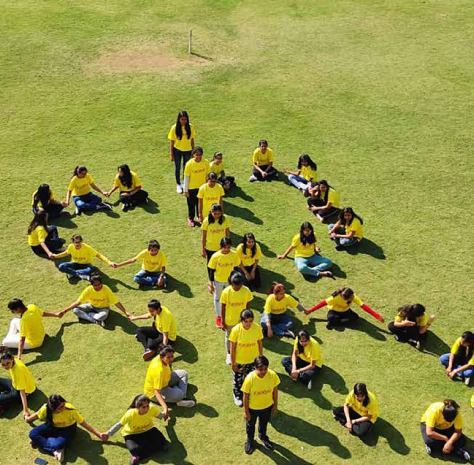The Gender Gap
The future is calling for women in leadership.
The world wins when we empower women to create better lives for themselves. In India, gender equality could positively impact our GDP by $700 billion by 2025, per the UN India Business Forum. Educating women helps reduce poverty and creates ripple effects for generations within their families. Those benefits grow exponentially when women pursue higher education, particularly in STEM, where they can contribute to solving real-world problems.


But today, women hold only 29% of senior leadership positions globally.
In India, it’s even lower at a mere 20%, due to multilayered and complex challenges.
But even when corporates push for diversity and inclusion, the talent pool doesn’t offer them enough job-ready, suitable women candidates—despite them graduating successfully from professional degree programs.
India produces the most female STEM graduates globally.
But why do we rank 19th in employing them?
Systemic biases, the gender pay gap, familial responsibility, and societal pressures are massive obstacles in their way.
But there are other factors working against women, impacting their preparedness for the workforce.
Limited by family or financial support
Very few women are privileged enough to have families that support their education and careers, financially and otherwise.
Educated, but not prepared
Very few women have the guidance, relevant role models, and exposure to build confidence and create a pathway to their dream role. Of those women, far fewer stick it out and rise to leadership levels.
Left at the last mile
Very few women get the intense interventions required to take them from “qualified” to “job-ready”. For companies recruiting such women, it takes time, effort, and money to train them, and then further upskilling as those employees move from one level to another.
How can we close the gender gap?
At Katalyst, we believe more needs to be done at the higher end of the value chain.
While many organizations and states are working to get girls to school, reduce dropout rates, and bring them into STEM, very few provide intense interventions to get them job-ready.
The September 2018 McKinsey report in collaboration with Pivotal Ventures, ‘Closing the Tech Gender Gap Through Philanthropy and Corporate Social Responsibility’ asserts that the US Tech sector is not doing enough to build pathways into Tech for women. It also points out that corporate philanthropy is focused on K-12 programs and not at a university level, from where they ultimately hire talent. India is no different.

That’s why Katalyst offers women financial support and in-depth technical, leadership, communication, and job-readiness skills training.
Men and women begin their careers equally confident about reaching top management...
New
Employees
Aspire
to reach top management
Confident
they can reach top management
... but women’s confidence declines with experience
Experienced
Employees*
*Have more than two years of experience or are junior managers
Aspire
to reach top management
Confident
they can reach top management
‘Gender equality’ refers to a situation where access to resources and opportunities are not limited by a person’s gender. To achieve gender equality in India, we must implement gender equity strategies and measures.
